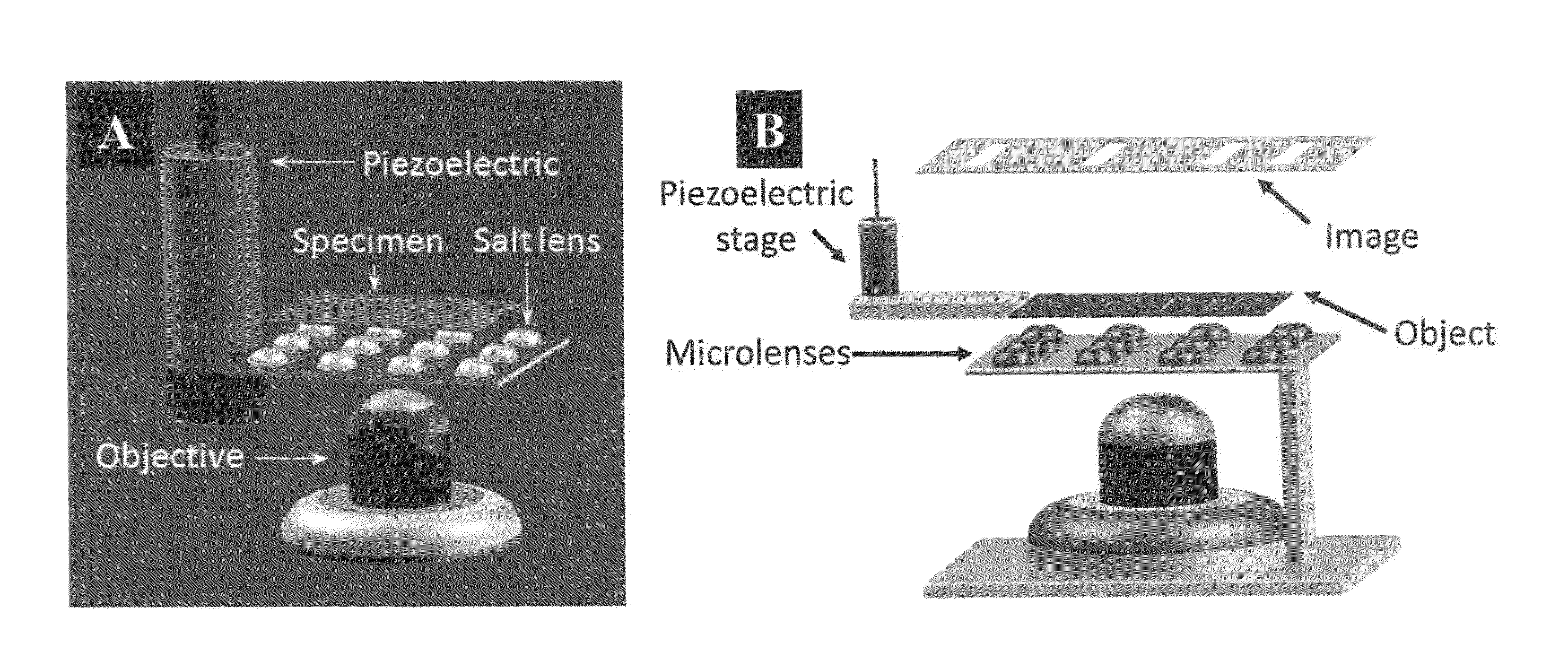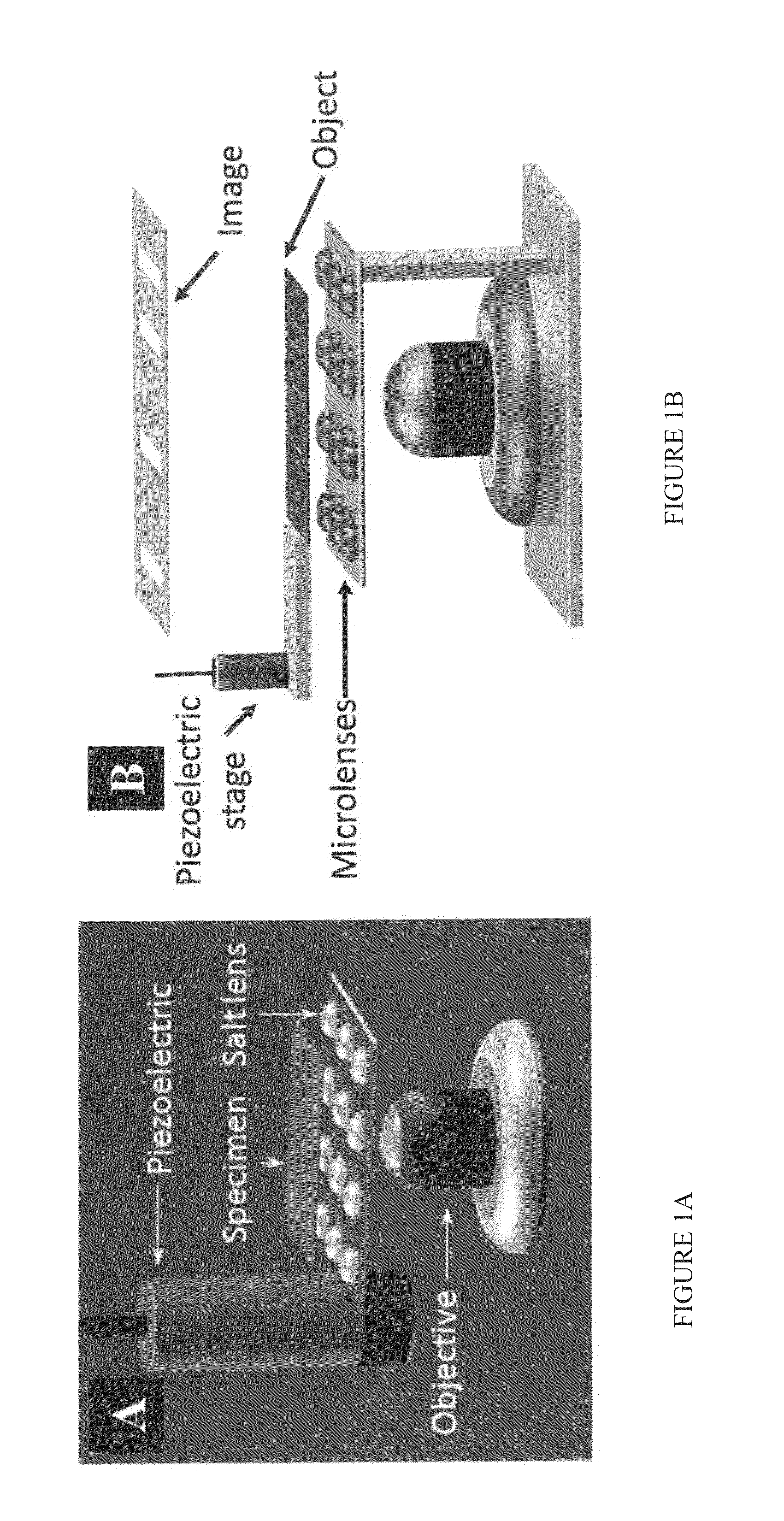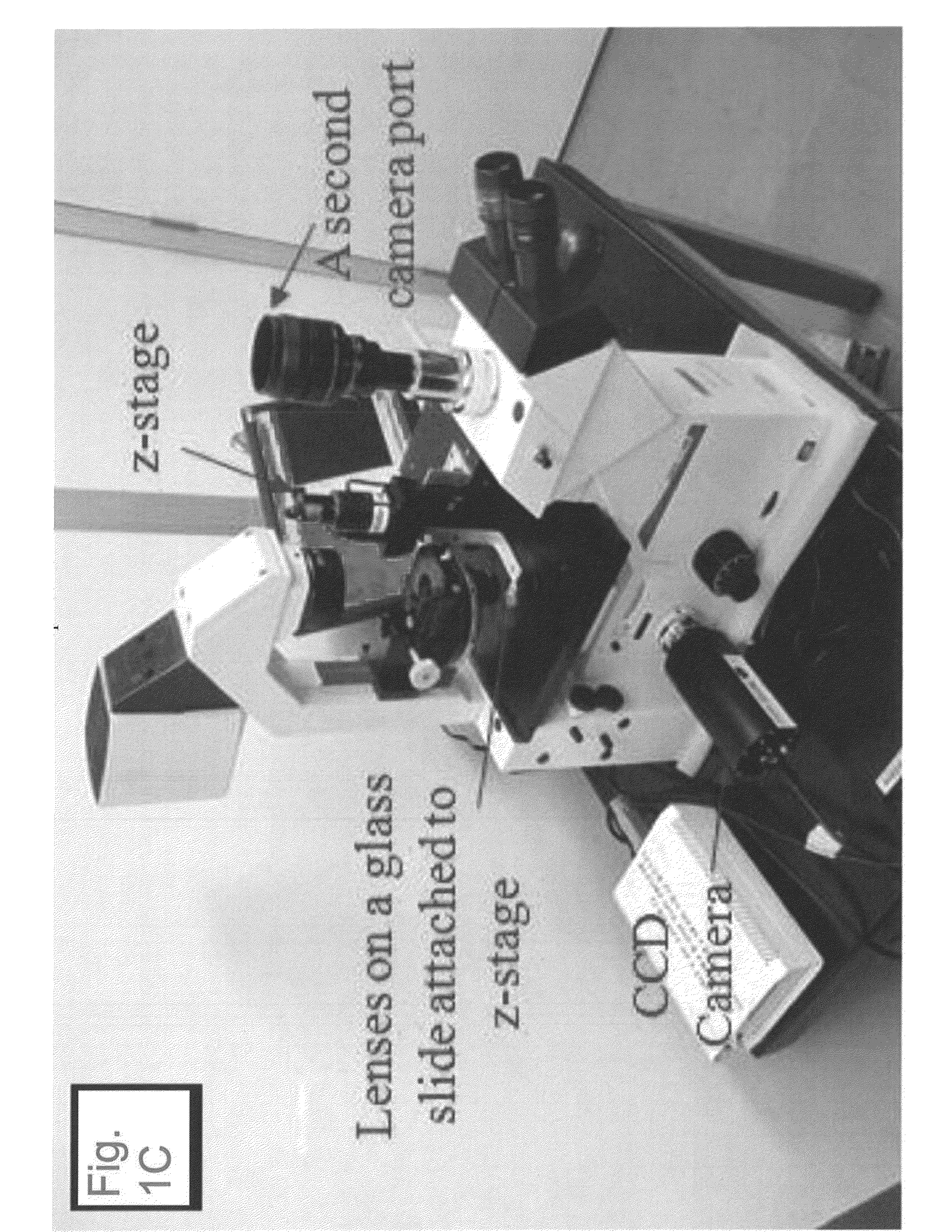Micro-lens for high resolution microscopy
a micro-lens and high-resolution technology, applied in the field of ultra-high-resolution microscopy, can solve the problems of difficult operation of optical microscopes, difficult to view things smaller than 0.2 microns through standard optical microscopes, and the theoretical limit of optical microscope resolution of 200 nanometers, etc., to achieve high yield, easy operation in atmospheric conditions, and high reproducibility
- Summary
- Abstract
- Description
- Claims
- Application Information
AI Technical Summary
Benefits of technology
Problems solved by technology
Method used
Image
Examples
Embodiment Construction
[0063]According to the embodiment(s) of the present invention, various views are illustrated in FIGS. 1-30 of the drawings.
[0064]The technology as disclosed and claimed herein is a plano-convex deliquescent salt microlens (ML) based optical microscopy and scanning technique which can achieve resolution <100 nm using white light illumination without any significant modification to the conventional microscope. In the case of the glass ML, the ML is spherical constructed of glass microspheres. ML is operated in a very near approximate to the objective. The diffractive light from objects, including propagation waves and parts of evanescent waves, is picked up by ML and transferred into propagation or whisper gallery waves, forming the primary enlarged and super-resolved virtual image. Then the primary image is observed with microscope for a secondary magnification.
[0065]The ML-based nanoscope consists of a conventional microscope, a plano-convex ML, and a XYZ piezoelectric stage (FIGS. ...
PUM
 Login to View More
Login to View More Abstract
Description
Claims
Application Information
 Login to View More
Login to View More - R&D
- Intellectual Property
- Life Sciences
- Materials
- Tech Scout
- Unparalleled Data Quality
- Higher Quality Content
- 60% Fewer Hallucinations
Browse by: Latest US Patents, China's latest patents, Technical Efficacy Thesaurus, Application Domain, Technology Topic, Popular Technical Reports.
© 2025 PatSnap. All rights reserved.Legal|Privacy policy|Modern Slavery Act Transparency Statement|Sitemap|About US| Contact US: help@patsnap.com



